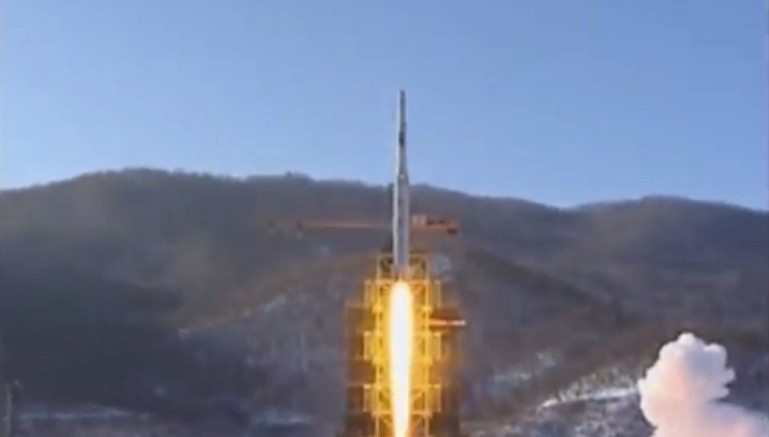The threat from North Korea is far larger than it appears.
Pyongyang doesn’t have an arsenal the size of Russia or China. But Kim Jong Un has the ability to produce catastrophic, indeed nearly fatal harm on the American homeland. According to some estimates, up to 80% of the American population could be dead within eight months following an EMP attack.
It is now widely recognized that it doesn’t take an arsenal of thousands of nukes to wipe out a vast portion of the American population, a result of destroying almost all electrical and computer facilities.
An electromagnetic pulse (EMP) has the potential to disrupt, degrade, and damage technology and critical infrastructure systems. Human-made or naturally occurring EMPs can affect large geographic areas, disrupting elements critical to the Nation’s security and economic prosperity. President Trump wanted to make the Federal Government foster “sustainable, efficient, and cost-effective approaches “to improving the Nation’s resilience to the effects of EMPs. However, he left office before any significant work could be done.
The technology association IEEE notes that “One Atmospheric Nuclear Explosion Could Take Out the Power Grid.”
In September of 2017, North Korea detonated an H-Bomb that it plausibly describes as capable of “super-powerful EMP” attack and released a technical report “The EMP Might of Nuclear Weapons” accurately describing what Russia and China call a “Super-EMP” weapon.
After massive intelligence failures grossly underestimating North Korea’s long-range missile capabilities, number of nuclear weapons, warhead miniaturization, and proximity to an H-Bomb, the biggest North Korean threat to the U.S. remains unacknowledged—nuclear EMP attack.
Ambassador Henry F. Cooper, the former Director of the Strategic Defense Initiative testified before Congress in 2017 that “we’re living through the most dangerous period of my lifetime …the vulnerability of our national electric power grid is among the most important and we are collectively continuing to endure or to take ineffective countermeasures to deal with it.”
At the same hearing, former Speaker Newt Gingrich noted that “…all the drugs we rely on for a wide range of things require refrigeration. And the minute you start knocking out the system, there’s a cascade of consequences…The grid is vulnerable at all three layers. And if somebodywere to methodically come in here, they would find, I think, there are as few as nine notable points you could knock out that would have a catastrophic effect because it would lead to a cascade of systems to shutting down. If you then looked at the effect, potentially, of either the series of local EMP attacks or a high-altitude EMP attack, you’re talking about a catastrophic event from which, conceivably, you couldn’t recover for years.”
American Military News reports that earlier this month, North Korea tested a new type of solid fuel ICBM that could deliver multiple nuclear warheads to the U.S. homeland. “A powerful new missile, the ‘Hwasong-18’ intercontinental ballistic missile, which serves as a crucial part of the nation’s strategic military power, was tested,’ the state’s official Korean Central News Agency said.”
A RAND study written last month by Bruce W. Bennett notes that “Even if a North Korean ICBM appeared to be falling well short of U.S. territory, what would happen if it were carrying a nuclear warhead designed to execute an electromagnetic pulse attack on the western part of the United States? The EMP from a nuclear weapon could burn out parts of the U.S. electricity distribution system. Americans on the west coast might find themselves without electrical power for months to years.
The threat is about to become even more complicated. Another rogue state, Iran, is on the verge of becoming a nuclear power. Like North Korea, it has strong ties to Russia and China, both of which are apparently not adverse to sharing atomic weapons technology. It is projected that it could pair a nuclear weapon with an ICBM capable of reaching the United States within the next two years.
Photo: North Korean Unha 3 rocket lifts off on December 12, 2012 (North Korea Tech / KCTV)
